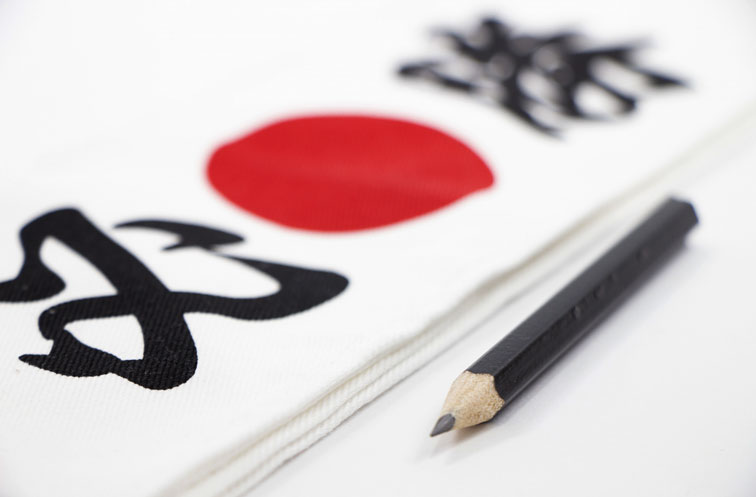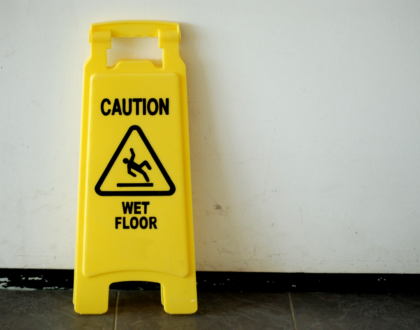Taking JLPT N2 and N1 – Study Tips

by Florian
“Japanese level: N2 or higher” is a common requirement for job offers in Japan. In this article, I share my personal experiences and recommend preparation strategies for the test.
コンテンツ
My experience with the JLPT
I took N1 in July 2016, and passed – it was my first and last time taking the JLPT. Below, you can find a quick rundown of my language learning journey.
I started learning Japanese in earnest during an exchange year that I did in high school, back in 2010. After returning home, I focused on studying Kanji (using the Heisig/mnemonic method) for the two years I was still “trapped” in my backwater hometown. After graduating from high school, I chose Japanese Studies as my major in university. Aside from classes, I started reading Japanese books, watched anime, and listened to podcasts/radio shows. During my time in university, I studied in Japan for one more year.
During all this time, I always saw the JLPT as more of a way to check my abilities rather than a goal in and of itself. This is probably why I ended up putting it off for so long (although I considered taking N3 and N2 along the way). In the end, I decided that I might as well go for N1 right away. The only “targeted” JLPT preparation that I did was working through Kanzen Master (Grammar) about 2 months before the test.
Is JLPT N2/N1 really necessary?
A common sentiment that I’ve encountered time and time again is that the higher JLPT levels are useless from a practical perspective. Grammar and vocabulary covered by N2 and N1 are often put on the same level as 13th-century haiku vocabulary: “You don’t use any of this in real life!”
It is true that passing N2/N1 doesn’t really prove your fluency in Japanese. Most importantly, the JLPT is missing a speaking section. If you want to work using Japanese, being able to hold conversations on a high level is crucial. The other part missing from the test is writing. It may not be as important as speaking, but if you’re going to use Japanese at work, you will have to write a lot. E-mails, chat messages, proceedings reports, and internal documents are all part of everyday life and you won’t be able to avoid all of them.
However, as I see it, that doesn’t mean that the JLPT is useless. At the very least, passing the test equips you with an official certificate that opens many doors when job hunting. While you can certainly get a job without the JLPT if you’re fluent enough, being able to show HR a piece of paper makes things a lot easier.
When you’re living in a foreign country, you will also always be confronted with new information, time and time again. Because of this, your level of understanding needs to be significantly higher than your output level. Even if you never actively use N2/N1 vocabulary or grammar, having studied them will give you the ability to deal with a greater variety of situations without feeling overwhelmed.
Study advice – The Basics
Below, you can find my recommendations based on my experiences with learning Japanese.
Start early and avoid cramming
Grammar is probably the most “crammable” JLPT subject. It’s all about patterns that you can easily memorize by going through a workbook like Kanzen Master or So-Matome in a few weeks. You can then test your understanding by writing a few example sentences and having them checked by teachers, Japanese friends or online (on sites like lang-8).
For everything else – vocabulary, reading, listening – I’d recommend a long-term approach. Unless you invest all your free time, your reading or listening comprehension will not make huge leaps in a single month. Getting vocabulary and kanji into your long-term memory takes time as well. Starting well in advance makes sure that you retain the things you learn and keep making steady progress.
Use textbooks as tracking tools
The advantage of textbooks is that they make your progress easy to grasp by presenting you with the things you have to learn in a neatly proportioned and organized fashion. However, since there are no “definitive lists” for the JLPT anymore, focusing too hard on textbook content decreases your ability to deal with unexpected things. I recommend using textbooks as a general guide of sorts or as a “study booster,” not the ultimate preparation tool (although many of them claim to be exactly that).
Practice daily
“Use it or lose it” sounds a bit corny, but it’s true. If you’re busy with school, work, and personal life, it can be useful to make a schedule or list of things that you want to do that week or month. In one way or the other, try to incorporate at least 1-2 hours of practice time into your day, every day.
Remember that “practice” doesn’t have to mean “sit at your desk and stare at a book”. A certain degree of comfiness is totally acceptable. It will help you to turn language learning into a habit that doesn’t feel like a chore. You can review vocabulary on the go, read a book or news article while enjoying a cup of coffee, write about your last weekend on Lang-8 or Hello Talk, etc. When you’re doing something that’s rather passive (like watching anime or TV dramas), prevent your mind from wandering by taking notes.
Have some other goal than the JLPT
Wanting to practice for the JLPT specifically is only natural. After all, you paid money for it and want to make sure you’ll pass.
However, always remember that passing the test is not the ultimate goal. Ideally, the JLPT should just be a step on your way to something else, not the end of your journey. Think of the things you want to do once you pass the test – read that novel or watch that movie you’ve been interested in, do in-depth research, live and work in Japan, or something else.
Study advice – Test sections
Kanji and Vocabulary
My main recommendation for building kanji and vocabulary knowledge is: Read, read, read.
What kind of text you choose doesn’t matter, as long as you end up with a healthy mix of different genres and voices (serious vs informal). A simple way to start is by reading NHK News or the more accessible version (featuring furigana), NHK News Web Easy. If you have access to them, I’d also recommend using novels and non-fiction in book form.
Absorbing new vocabulary through reading
My study method was pretty basic: I just started reading the text and kept going as long as I got the overall meaning while circling or writing down unknown words and kanji along the way. After finishing an article, chapter, or a certain amount of pages, I wrote down all the things I circled and made custom Anki cards for them.
The flashcards contained the word, its meaning in my native language (German), the copy-pasted definition from a Japanese-Japanese dictionary, and one to three example sentences. If the Japanese word was very specific and had a 1:1 equivalent (e.g. 遠心分離機 – centrifuge), I sometimes omitted the dictionary definition and the sentences.
In my head, I separated the vocabulary I picked up into two groups: Passive and active. Passive words were for further reading or the JLPT, active words were for use in real life. If I had encountered the word in a contemporary text, I would at least put it into the passive category, no matter how obscure it seemed.
When a passive word came up during review time, I would only mentally check if I knew its general meaning and keep going. For active vocabulary, on the other hand, I would recall the example sentences and also write the word down. The JLPT doesn’t have a writing section, but I’ve always felt that physically writing words and kanji helps me remember them.
Clarifying differences between similar words
Another thing I did was taking detailed notes on words that have similar meanings. You probably already know this if you’re reading this article, but the JLPT includes questions where you have to choose the right kanji or word for a sentence. The options given are often very similar and only differ in nuance, so it’s important to be able to differentiate them.
If you’re confused, turn to your textbook, a dictionary (ideally Japanese-Japanese, like Kotobank) or Google. For example, if you want to know the exact difference between 設立 and 設置, just search 設立 設置 違い and (Japanese) pages explaining nuances and usage should come up.
Kanji practice
Did you notice that I didn’t talk about kanji until now? That’s because from a certain point onward, I almost exclusively learned new kanji from “proper words” that I encountered in texts I read. As I mentioned above, I started learning kanji with the Heisig method, and I do think that mnemonic approaches are helpful for getting familiar with them. That being said, studying kanji separately (isolated from each other) is pretty much a waste of time above the N3 level in my opinion.
Grammar and Reading
Unsurprisingly, the best way to prepare for the reading section is to read a lot. Texts you’re personally interested in (manga, novels, etc.) are motivation-boosters and help keep you going. But you should also throw in a “serious” text every now and then. The texts in the JLPT reading section aren’t exactly light novel material.
When taking the test, the trick is to read the questions (and the possible answers) first and then going through the text as quickly as possible while searching for the parts that contain the answers. Judging by what I heard from friends, many simply can’t get through the text quickly enough because unknown words or sentence structures trip them up too much.
To prevent this, you need the ability to quickly grasp the structure and meaning of a text you’ve never seen before. Allow yourself to get a bit looser with your reading. Try text scanning techniques and “guessing” the meaning of new words and grammatical patterns based on the context they appear in.
Listening
The best practice tools for the listening section are Japanese podcasts. Nowadays there are quite a few of them, so it’s relatively easy to find one that suits your language level. Head over to our article on podcasts for my personal recommendations!
The hardest part about the JLPT listening sections is that the audio tracks contain a whole bunch of information that’s only there to confuse the listener. Two people briefly talk about work – then about ramen for a solid minute – and then about work again, for five seconds. Question: What did they say about work? Just like in the reading section, you need the ability to separate the important parts from the junk and remember it short-term. Podcasts that feature idle chatter or small talk between hosts are a surprisingly good way to practice for this.
Conclusion
Studying for the higher JLPT levels may seem like a daunting task. But if you focus less on cramming and instead steadily build your knowledge over time, you will acquire a certain flexibility that will alleviate stress and help you make the right decisions even if you’re not 100% sure. When in doubt, stick with your original answer – chances are that your intuition sent you on the right path.





